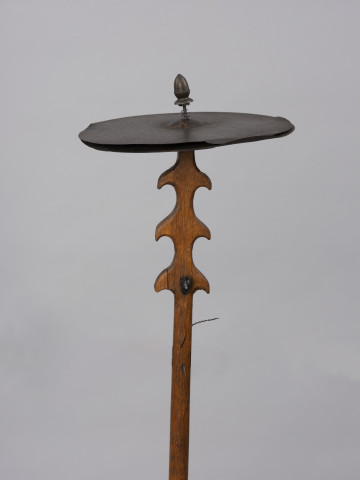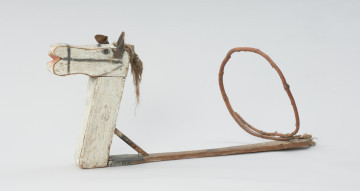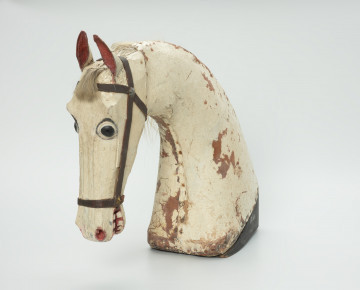
Bladder fiddle (Deil's fiddle)
1901 — 1945
National Museum in Szczecin
Part of the collection: Material culture of West Pomerania
In the merry processions which went around the villages during the Christmas and carnival period with their holiday wishes and performance of ritual scenes, the key role was played by animal monstrosities, including a goat associated in folk belief with fertility and vitality. The boy playing the part was usually dressed in a cloth sheet or sheepskin turned inside out, and in his hands, he held a stick topped with a realistically sculpted animal head. The core idea of the ritual, based on the magical thinking according to which “like produces like”, was ensuring the rebirth of nature after the winter stagnation. The goat that was “put to death” during the performed scene was then “resurrected”, just as the dormant nature would return to life and produce the crops necessary for human survival. There are three ceremonial goat masks in the ethnographic collections of the National Museum in Szczecin. The effigy on display from the 1st half of the 20th century is an amateur, one-off product. The animal's head is made of wood, using a carpentry processing technique. It has leather ears and a goatee made of bristles. According to the museum inventory, it comes from the Pyrzyce area, but the Atlase der Deutschen Volkskunde locates the goat ritual in the Central Pomerania. The goat was originally in the collection of the Pommersches Landesmuseum Stettin.
Agnieszka Słowińska
Author / creator
Dimensions
cały obiekt: height: 10 cm, width: 50 cm
Creation time / dating
Creation / finding place
Identification number
Location / status

1901 — 1945
National Museum in Szczecin

1. połowa XX wieku
National Museum in Szczecin

1. połowa XX wieku
National Museum in Szczecin
DISCOVER this TOPIC
Museum of King Jan III's Palace at Wilanów
DISCOVER this PATH
Educational path